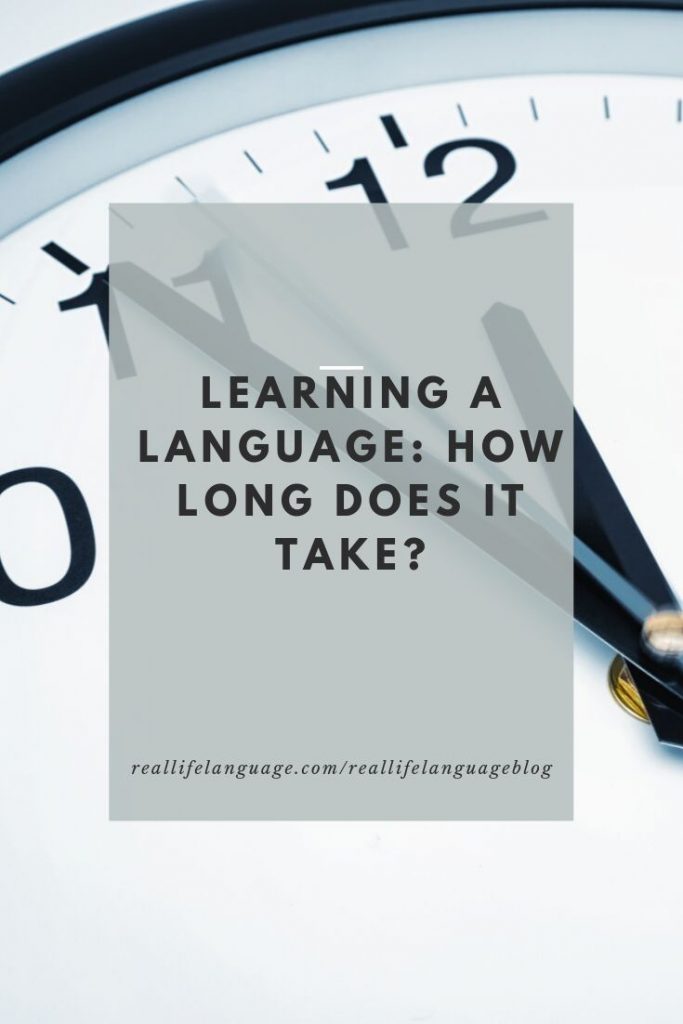
Learning a New Language: How Long Does It Take?
Learning a new language? Do you wonder how long it takes? Check out the video below:
Prefer to read? Here’s the transcript:
Welcome to our next lesson. In today’s lesson, we’re going to explore how long it takes to become fluent in a language. So how long does it take? Before we talk about specific abouts of time in learning different languages, I want to talk a little bit about where this research comes from.
So the United States Department of State has the Foreign Service Institute and it’s the training center, language training center for people working all over the world in embassies and consular offices, people who issue visas, people all the way up to ambassadors.
And in their training modules, many of which are completely free, they’re public domain, they’re online, people will have been sharing them around for years. They have broken down different languages into different categories. And these different categories take different amounts of time.
So the people who normally go through the Foreign Service Institute tend to be in their 40s, they tend to be highly educated, they tend to have already learned another language and they’re completely focused on the task at hand, which is getting ready for their next overseas assignment.
So I would say that they’re not a typical language learning profile. You might take a lot more time to reach the same level of fluency that people going through the Foreign Service Institute did or you may be much quicker, much faster. We’re all different. Regardless, I think that they’re really good, helpful, practical guidelines.
I think anybody can use these guidelines to reach a specific level of fluency. So the level of fluency that we’re talking about is that intermediate high, advanced low, which is they’re very similar and that B2 level that we talked about. Okay? So that one point in the continuum of fluency. You can be much less proficient, of course, than those levels and you can be much more proficient.
So what they’ve done is they’ve divided up languages into different categories. So if you’ve researched this, it’s readily available online, Google. You’re going to see different quotes for these different categories. Different quotes of time, different research. I think, again, they’re just guidelines, but they’re helpful.
So to reach that level of fluency that we talked about with a category one language, these are the languages that are really similar to English. So you’ll see Spanish, French, Italian, et cetera. Okay. Category two, you might see German in category two. On some scales, you might see German in category one with an extra 30 hours. I’ve seen that before.
Category three languages are very different from English and take longer to learn. And category four languages are essentially just like the category three languages, but they have completely different writing systems. And those category three in four languages are very, very, very different culturally as well. A huge component in language learning. You can’t learn language without culture.
So these category one languages, to reach that sort of B2 intermediate, high, advanced, low level, these category one languages might take anywhere between 750 hours and 1000 hours. Again, we’re all different, but I think it’s a nice guideline.
I also think it’s good to remember these category one languages, I like to think of them as my cousins. So sort of like being at your cousin’s house when you’re learning their language. You’re going to see so many different similarities, so many things that are familiar to you, things that you already know, customs and traditions that you already know, names you already know, foods you already know. But it’s a little bit different. It’s not quite your house.
Remember geographically, these places are fairly close to England where the English language originated of course. These category two languages are very similar for English speakers to learn.
These category three and four languages are very different culturally, linguistically, and they take a long time. And think about it, most of these places are very, very, very far from England.
So what I like to think of it, category one, 750 to 1000 hours. Okay. Category two, double that, so sort of 1500 hours to 2000 hours to reach that same level. These category three and four languages take three times as long to learn for English speakers. So multiply that 750 to 1000 range by three and you’re looking at almost 3000 hours to reach that same level of fluency.
So think of that one, two and three. 750 to 1000 hours for category one languages. Category two languages, twice as long. Category three languages, three times as long. So we’ll see you in the next lesson and we’re going to talk all about specific and practical ways to make that time to learn these different languages. See you in the next lesson.
Looking for more tools to learn a language? Click here:http://reallifelanguage.com/reallifelanguageblog/2017/01/14/self-assessment-workbook/